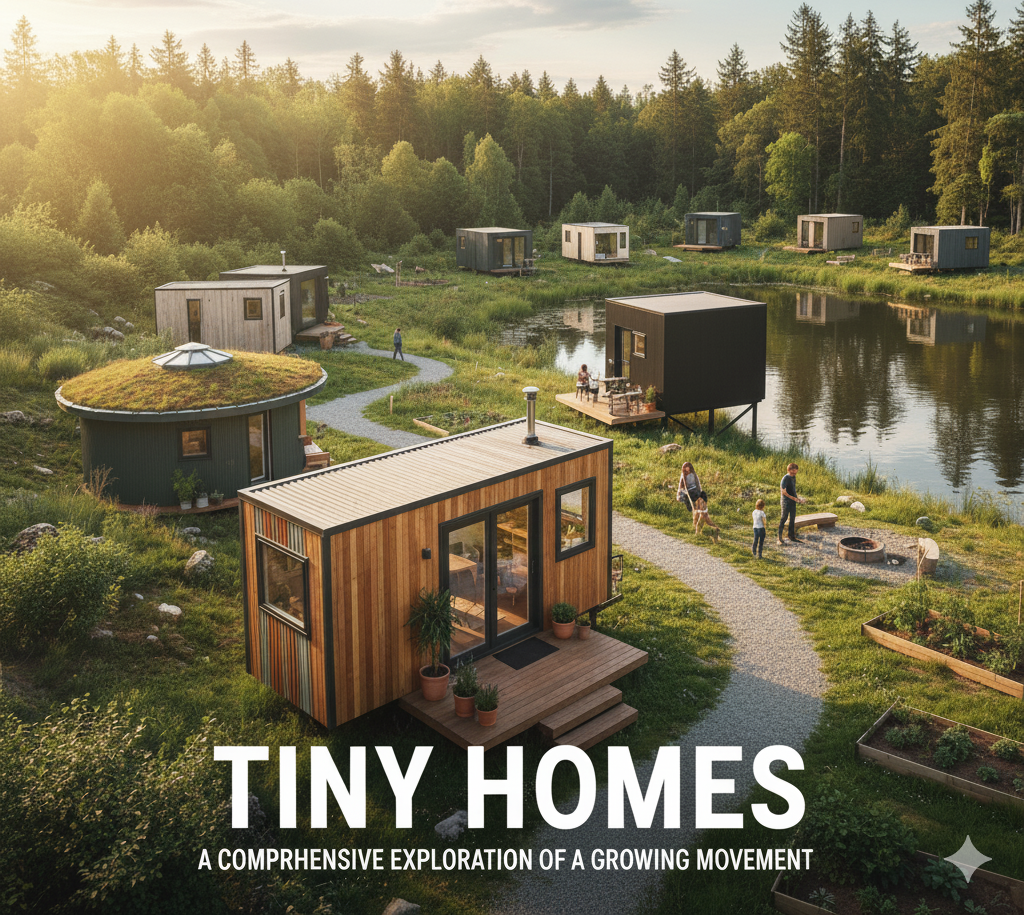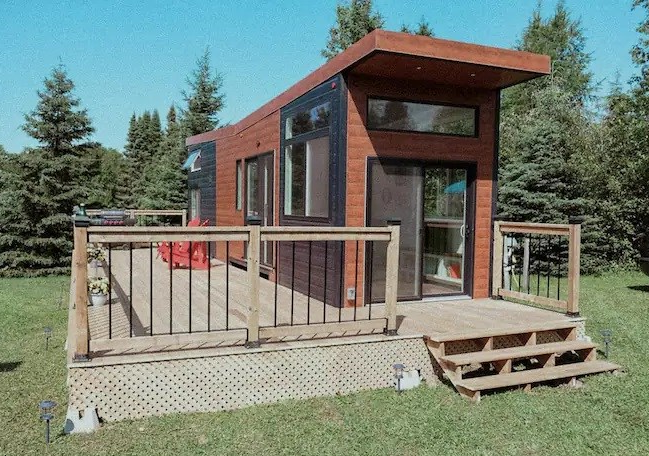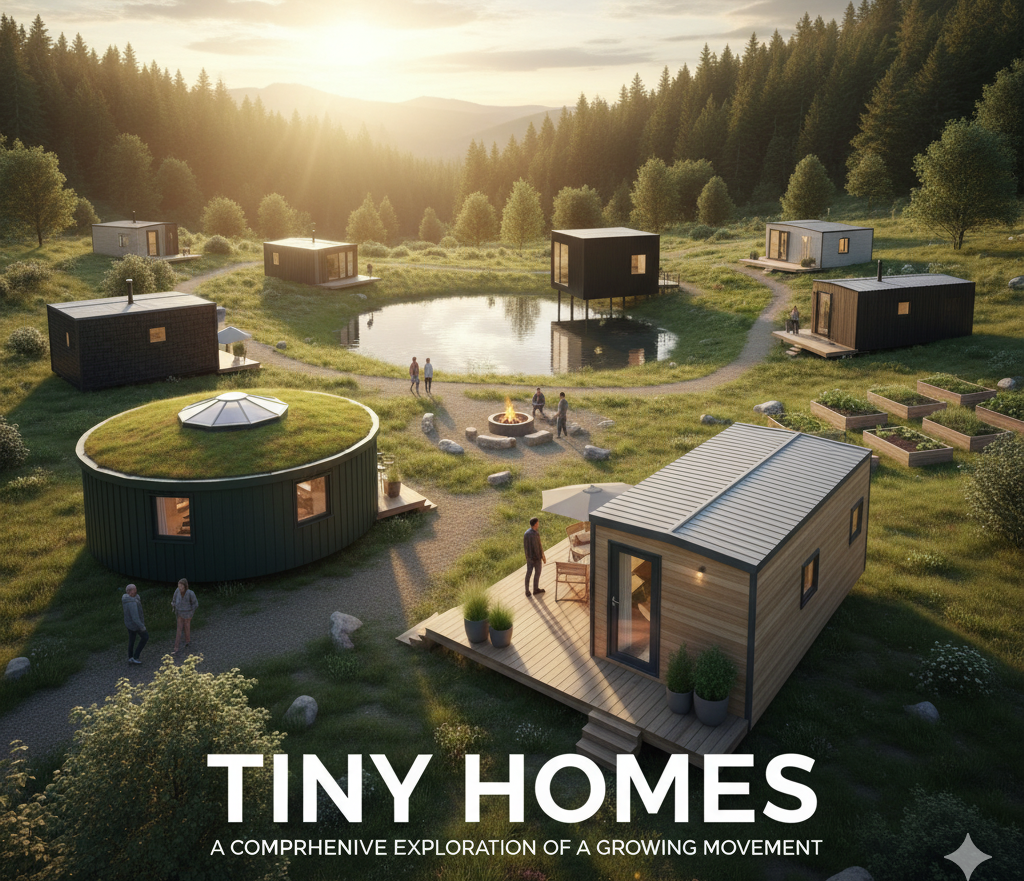
Introduction to Tiny Homes
The concept of home has always been central to human life, not just as a physical shelter but as a reflection of cultural values, economic realities, and personal aspirations. Over the past few decades, however, rising housing costs, urban density, environmental concerns, and shifting social priorities have led to a growing interest in alternatives to traditional housing. Among these alternatives, tiny homes—typically defined as dwellings under 400 square feet—have emerged as a cultural movement, a design innovation, and, for many, a lifestyle choice.
Here we explore tiny homes in depth, examining their historical roots, economic and environmental benefits, lifestyle implications, challenges, and their place in the future of housing. By looking at both the promises and limitations of tiny homes, we can better understand why this movement has captured the imagination of so many people worldwide.
The Origins of the Tiny Home Movement
While the tiny home movement may feel like a contemporary trend, the concept of compact living is far from new. For much of human history, homes were modest in size. Ancient dwellings such as yurts, teepees, and huts offered only the essentials: shelter, warmth, and community. Even in early industrial cities, workers often lived in one- or two-room apartments with multiple family members.
The modern idea of tiny homes, however, emerged more deliberately in the late 20th and early 21st centuries. Writers such as Henry David Thoreau, who lived simply in a small cabin at Walden Pond in the mid-1800s, inspired later advocates of minimalist living. In the 1970s and 1980s, countercultural movements emphasized sustainability and self-sufficiency, sparking renewed interest in small, efficient homes.
The term “tiny house movement” gained traction in the early 2000s, driven by rising housing costs, environmental concerns, and growing dissatisfaction with consumer-driven lifestyles. Pioneers like Jay Shafer, often credited as one of the founding figures of the modern tiny house movement, built and popularized homes under 100 square feet, demonstrating that comfort and function could be achieved without excess. His designs and advocacy helped spark a wave of enthusiasm for downsized living.
Defining a Tiny Home
There is no single definition of what constitutes a tiny home, but most fall under 400 square feet. They can be stationary or mobile, built on foundations or trailers, and range from rustic cabins to high-tech, eco-friendly dwellings.
Tiny homes generally fall into three categories:
- Tiny Houses on Wheels (THOWs): Built on trailers, these homes are designed for mobility and often skirt certain building codes by being classified as recreational vehicles.
- Tiny Houses on Foundations: These are permanent structures, often built as accessory dwelling units (ADUs) on existing properties.
- Alternative Structures: Includes converted buses, shipping containers, and modular micro-apartments that embody tiny living principles.
The appeal of tiny homes lies not only in their size but in their intentionality: every design choice is deliberate, every item has a place, and the focus shifts from accumulation to experience.

Economic Motivations
Housing affordability is one of the most pressing issues of the 21st century. Homeownership has become increasingly unattainable for many, with skyrocketing real estate prices, student debt burdens, and stagnant wages creating barriers to entry.
Tiny homes present a potential solution:
- Lower Construction Costs: A traditional home in the U.S. averages over $300,000, while many tiny homes can be built for $30,000 to $80,000, depending on materials and labor. DIY builders can spend even less.
- Reduced Utility Expenses: With smaller square footage, heating, cooling, and electricity needs are minimal. Many tiny homes incorporate off-grid systems, reducing ongoing costs.
- Minimal Debt: By avoiding large mortgages, many tiny home owners achieve financial freedom sooner. This can allow for reduced working hours, earlier retirement, or investment in experiences rather than possessions.
- Flexibility in Land Ownership: Some owners place tiny homes on rented land, shared lots, or family property, reducing or eliminating the need for expensive land purchases.
For millennials and Gen Z adults facing unstable housing markets, tiny homes represent a way to bypass traditional economic barriers and reclaim autonomy.
Environmental Benefits
The tiny house movement is deeply intertwined with sustainability and environmental consciousness. By consuming fewer resources and producing a smaller footprint, tiny homes can play a role in addressing climate change and ecological degradation.
Key environmental advantages include:
- Reduced Energy Consumption: With less space to heat or cool, tiny homes often use a fraction of the energy of standard homes.
- Sustainable Building Materials: Many tiny homes incorporate reclaimed wood, recycled metal, and eco-friendly insulation.
- Encouragement of Minimalism: Living in a tiny home limits storage, discouraging overconsumption and waste.
- Off-Grid Potential: Many tiny homeowners install solar panels, composting toilets, and rainwater catchment systems, reducing reliance on public utilities.
- Lower Land Impact: Because they require smaller plots, tiny homes can reduce urban sprawl and preserve green space.
In a world increasingly concerned with sustainability, tiny homes align with values of conservation, efficiency, and mindful living.
Lifestyle and Philosophical Shifts
Tiny living is not just about the house itself—it’s about the lifestyle that accompanies it. Advocates often speak of freedom, intentionality, and connection as central to their choice.
- Freedom from Materialism: Limited space discourages accumulation, pushing individuals to value quality over quantity.
- Mobility and Flexibility: Especially with THOWs, homeowners can relocate easily, pursuing seasonal work, travel, or community living.
- Stronger Relationships: In smaller spaces, families and couples often report deeper connections due to shared experiences and proximity.
- Focus on Experiences: With fewer financial burdens and less focus on possessions, many tiny home dwellers invest more in travel, hobbies, and personal growth.
- Mindful Living: Every purchase and design decision carries weight, fostering intentionality and mindfulness.
For many, tiny living represents not a sacrifice but an expansion of possibility—fewer obligations, more freedom.
Challenges and Criticisms
Despite their appeal, tiny homes are not without drawbacks. Practical, legal, and cultural challenges often complicate the dream of tiny living.
- Zoning and Legal Restrictions: Many municipalities do not allow tiny homes, especially THOWs, due to building codes and minimum square footage requirements. Navigating these regulations can be difficult and frustrating.
- Limited Space: For some, the novelty wears off, and the constraints of small living—especially with children, pets, or hobbies—become challenging.
- Financing Difficulties: Traditional banks are reluctant to finance tiny homes, especially mobile ones, leaving owners reliant on personal savings or alternative loans.
- Resale Value: Unlike traditional homes, tiny homes may depreciate, especially if built on wheels, limiting their long-term investment potential.
- Social Perceptions: While attitudes are shifting, some still view tiny homes as unconventional, even stigmatizing them as a step down from “normal” housing.
- Practical Limitations: Issues such as storage, hosting guests, and managing day-to-day life in limited space can be overwhelming for some.
These challenges highlight that tiny homes are not a universal solution, but a niche lifestyle choice.

Tiny Homes in Urban vs. Rural Contexts
The context of location shapes the feasibility and function of tiny homes.
- Urban Areas: In dense cities, micro-apartments and ADUs serve as tiny living alternatives, helping alleviate housing shortages. Cities like Tokyo and New York have experimented with small living units to maximize space. However, zoning laws and high land costs can be barriers.
- Rural Areas: Tiny homes thrive in rural or suburban environments where land is more accessible and regulations less restrictive. Many tiny homeowners place their dwellings on family property or cooperative land.
- Community Models: Tiny home villages have emerged as solutions for homelessness or affordable housing, offering shared amenities and support networks. Examples can be found in cities across the U.S., Canada, and Europe.
Cultural Influence and Media Representation
Tiny homes have gained mainstream visibility through documentaries, YouTube channels, and TV shows such as Tiny House Nation and Living Big in a Tiny House. Social media platforms showcase innovative designs and lifestyles, inspiring viewers to reimagine their own housing needs.
This visibility has contributed to romanticizing tiny living, sometimes glossing over its challenges. Nevertheless, media exposure has played a major role in growing interest and acceptance of the movement.
Future Prospects
As housing crises intensify and sustainability becomes a global priority, tiny homes will likely continue to evolve. Possible future directions include:
- Policy Integration: Cities may increasingly adopt zoning reforms to allow tiny homes as ADUs, promoting density and affordability.
- Technological Innovation: Smart home technology, modular construction, and sustainable materials will enhance functionality and comfort.
- Community Development: Tiny home villages could expand as solutions for homelessness, disaster relief, or senior housing.
- Global Expansion: While particularly prominent in North America, tiny homes are gaining traction worldwide, adapting to cultural contexts and local needs.
Conclusion
Tiny homes represent more than just small dwellings; they embody a philosophy of intentionality, sustainability, and independence. By challenging traditional notions of success, homeownership, and material accumulation, the tiny house movement has sparked important conversations about how we live and what we value.
While they are not without obstacles—legal restrictions, practical limitations, and lifestyle adjustments—tiny homes offer viable alternatives in an era defined by housing crises and environmental concerns. For some, they are a stepping stone to financial stability; for others, they are a lifelong lifestyle.
Ultimately, tiny homes invite us to reconsider the meaning of “home” itself. Is it a large structure filled with possessions, or is it a space that enables freedom, connection, and purpose? As society continues to grapple with challenges of affordability, sustainability, and community, the tiny home movement may play a small but significant role in reshaping the way we live.
Find out more about Tiny Homes on Amazon by clicking here.
Why not chek out our video on How to Finance your Tiny Home on YouTube.
If you liked this article on Tiny Homes please share it with your friends and family, and then check out more of our articles on Homes and Gardens.
.
